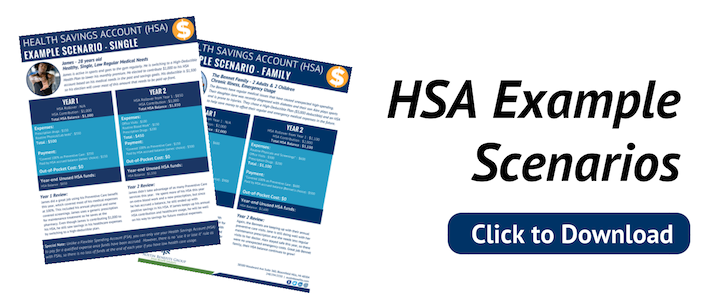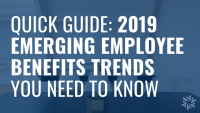
Top Tips to Make the Most of Your Health Savings Account
Health Savings Accounts (HSAs) are a valuable benefits option with triple tax benefits that help you prepare for health care costs in retirement. Are you missing out? Check out our top tips to make the most of your Health Savings Account.
Cover Your Out-of-Pocket Costs
Wary of out-of-pocket costs with your high-deductible health plan (HDHP)? Make sure you enroll in an eligible Health Savings Account and contribute enough to cover your known medical expenses.
Once you know you have your known costs covered, you can consider contributing more to cover possible emergency costs. The advantage of your HSA is if you do not use your leftover funds, you keep them (forever!) and can use them for qualified expenses even if you change jobs or retire.

Remember that Flexible Spending Account funds are “use-it-or-lose-it” every year, unless you have the $500 maximum rollover feature. If you find yourself struggling to “use up” your expiring FSA funds before the end of the year, an HSA may be the right option for you. The FSA also has a maximum of $2,650 in annual contributions (for a single person in 2018), while the HSA allows for a maximum of $3,500 (for a single person in 2019).
Read More: IRS Sets 2019 Limits for Group Plans, HDHPs, HSAs
Did you know you can have an FSA and HSA at the same time? When you have both accounts, your FSA is Limited Purpose. This means you can only use the FSA for dental and vision expenses while reserving the HSA for a wider range of eligible medical costs. This means that a single person could potentially reserve a combined $6,150 tax-free to help cover their medical, dental, and vision costs. If you’re enrolling in both an FSA and HSA, consider contributing your expected dental & vision costs to the FSA (not exceeding the maximum) and then contribute your expected medical, emergency, and savings intended funds to your HSA.
Maximize Your Employer Contributions
Does your employer contribute funds to an employee Health Savings Account? Don’t lose out on financial support for your health care from your employer.
Employers may have different rules and timing for eligibility of contributions. Their contribution may be based on a matching system or may be available to employees who have worked at the company for a minimum amount of time. Check with your HR representative to verify how your employer handles contributions.
The average employer contribution to an HSA for individual coverage in 2016 was $474 and $801 for family coverage.
Save for Retirement
If you only think of your HSA for covering next year’s expenses, you are missing out on the long-term value. Consider your HSA a retirement savings account, like your 401K or IRA.
When we’re older, it’s inevitable to require more and sometimes costly medical care. A 65-year old couple retiring in 2018 is estimated to need $280,000 just to cover medical expenses throughout retirement, not including dental or long-term care. By taking steps now to prepare for the future, you can help mitigate the costs of healthcare and prescriptions later in life.
Over 50? You are eligible to contribute an extra $1,000 each year to your health savings account until you reach Medicare-eligible age. Once you hit Medicare age, you are no longer able to contribute to your HSA. It’s not too late to set yourself up for financial success.
You can contribute to your HSA until you reach Medicare-eligibility. However, you can draw from your HSA for qualifying medical expense after you reach Medicare-eligible age without penalty. You can use your HSA to pay for your Medicare premiums, including both part B and Part D prescription coverage. If you have employer-sponsored coverage after 65, you can also pay those premiums from an HSA.
Long-term care is becoming a trending and necessary benefit, and your HSA can cover part of the cost for LTC insurance policies. The amount you can use to pay for a long-term care policy increases as you get older.
Read More: What You Need to Know About Long-Term Care Insurance
Looking for even more ways to stretch your health care dollars and save money? Read our 10 Easy Ways to Strech Your Health Care Dollars guide and check out more articles about utilizing your benefits the Benefits Blog. Follow Austin Benefits Group on Facebook, LinkedIn, and Twitter for more tips, news, and resources.
Like these ideas? Share this with your internet friends and follow us using the links below! We appreciate you spreading the benefits love.



